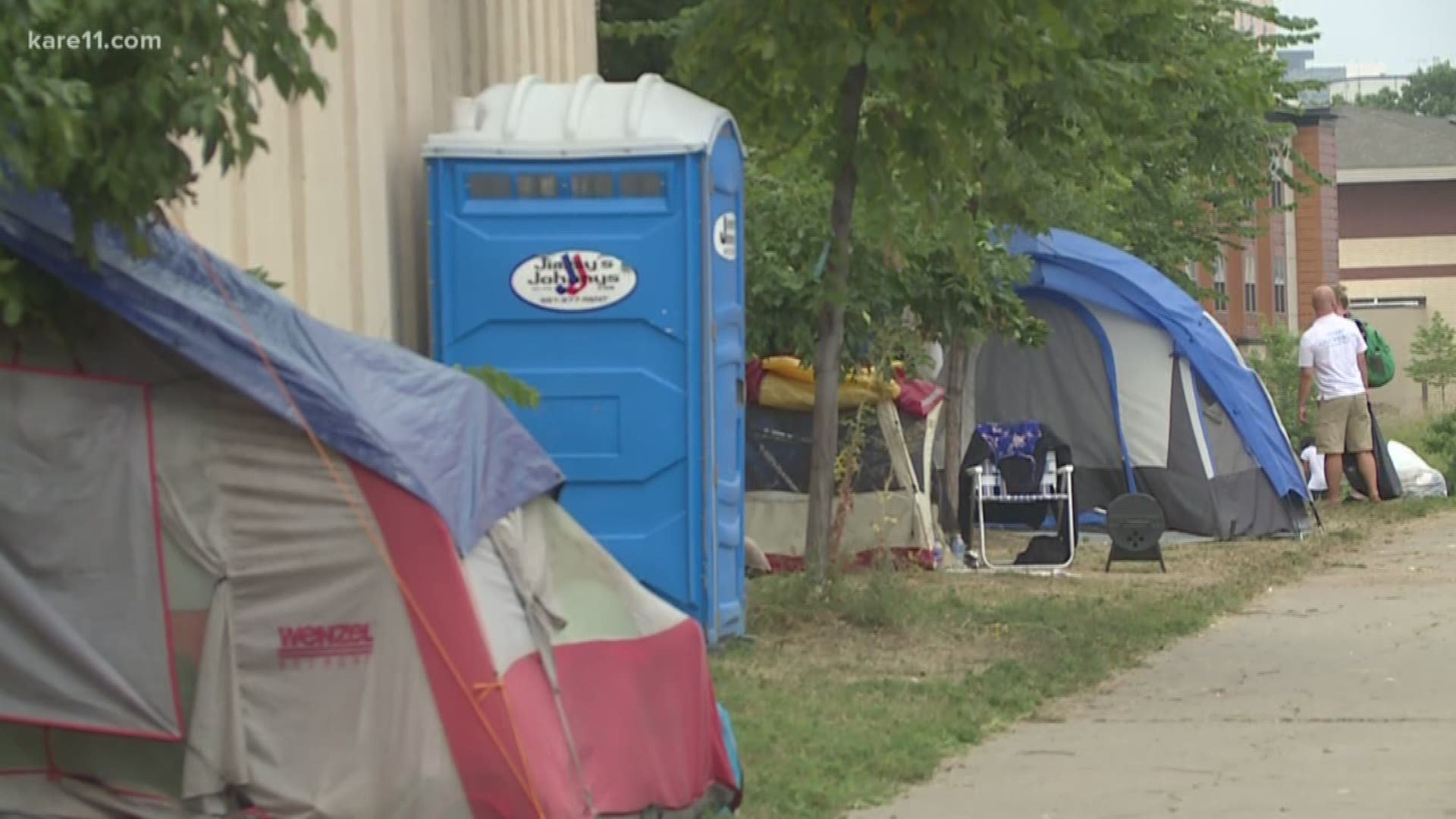MINNEAPOLIS - James Cross wants the world to see what's happening at "The Wall."
He wants you to see the tents, the lawn chairs, the water coolers and the shopping carts filled with trash bags, resting in front of a highway barrier near the intersection of Hiawatha and Cedar in south Minneapolis. This community of homeless people, consisting almost entirely of Native Americans from the neighborhood, has been growing rapidly this summer due in part to the heroin epidemic.
And Cross, a volunteer with Natives Against Heroin, said the public cannot afford to ignore his people any longer.
"We're strong people from the land. And we've got to continue to help these people so we can rise as a nation," Cross said. "If they can't come to us, we have to come down here and start doing the work."
Cross, along with other volunteers and a liaison from the Minneapolis Police Department, have spent the week handing out water and food to the people who've congregated near the highway. By Tuesday, volunteers estimated about 30 to 35 people still remained there.
That includes Kat Yanez. After spiraling into a heroin addiction, Yanez spent the past few years shuffling through shelters and friends' couches.
Now, she has settled inside a little blue tent near "The Wall," as they call it, because she feels she has nowhere else to go.
"(Addiction) took my home, it took my kids. It took everything," Yanez said. "But I'm gonna make it. I'm gonna make it."
Nobody's quite sure why so many homeless people from south Minneapolis have suddenly gathered near this wall at Hiawatha and Cedar, but it's causing significant health problems, according to the American Indian Community Development Corporation.
Michael Goze, the group's CEO, said his outreach workers are particularly worried about Hepatitis C, MRSA, syphilis, scabies and bed bugs.
"When you have a group of people that size, and you have no facilities, you create your own health concerns there," Goze said.
The AICDC has proposed a services area in the neighborhood that would give people access to showers and bathrooms, in order to improve their hygiene and hopefully decrease the risk of disease.
The organization also offers housing for people off the streets, and it hopes to find a permanent option for this cluster of homeless people before the winter arrives.
"The bottom line," Goze said, "is we have about three months to figure this out."
For now, the homeless population is simply living day by day.
The group living near The Wall technically occupies Minnesota Department of Transportation property. However, a department spokesperson said in a statement that MnDOT is providing "needed support" to the homeless individuals alongside local governments, advocacy groups and the Minneapolis Police Department. The MnDOT spokesperson did not say whether MnDOT would seek removal of the homeless camp, but the statement noted removal is sometimes "necessary when conditions at these unauthorized sites become a public health issue and threaten the safety of the individuals in the encampments as well as members of the public who may encounter the sites."
The Minneapolis Police Department, however, is not interested in enforcement or prosecution, according to a police spokesperson. Instead, the department is working through its liaison to help improve daily living conditions and connect people with addiction treatment if they need it.
As someone who went through recovery himself before creating Natives Against Heroin, Cross welcomes these efforts to help homeless people find resources.
"They've been pushed away from a lot of systems that are designed to help our people. And they just get sick of it because the doors close," Cross said. "As an addict, someone going through the struggle, they don't want to hear 'no.' They just give up because they figure nobody wants to help them. When we come out here, we help them."
Yanez, meanwhile, dreams of a world beyond The Wall.
"Not to a white picket fence, but to where there's a roof over my head," she said. "I think if we all just work together, and do our thing, we can get it. And I'll go home."

